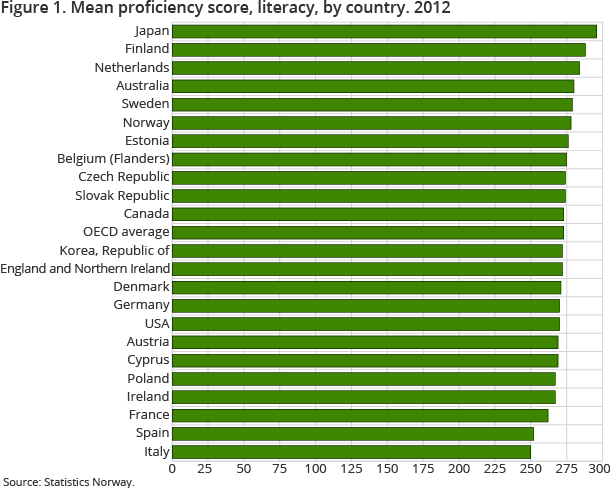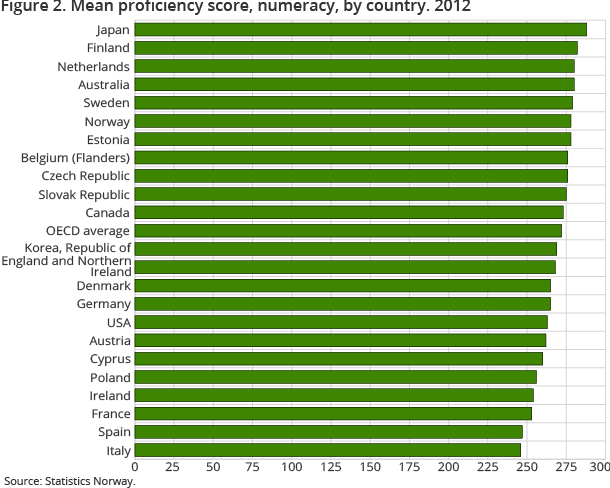High skill levels among Norwegian adults
Published:
Norwegian adults have proficiency above the OECD average in literacy, numeracy and problem solving in a technology-rich environment. In Norway, adults aged between 25 and 34 have the highest mean scores in literacy and numeracy, as well as the largest percentage that is proficient at the highest level in problem solving.
- Full set of figures
- Survey of adult skills
- Series archive
- Survey of adult skills (archive)
Results from the OECD Survey of Adult Skills (PIAAC) show that Norway is one of four countries where the skills of the adult population are above the OECD average in literacy , numeracy and problem solving in a technology-rich environment . The three other countries that this applies to are Finland, Sweden and the Netherlands. Japanese adults have the highest mean scores in literacy and numeracy, followed by Finnish adults. The lowest scores are found in Italy and Spain. In problem solving in a technology-rich environment, the largest and smallest shares in the two highest proficiency levels are found in Sweden and Poland respectively. France, Italy, Cyprus and Spain have not carried out the computer-based problem solving assessment, and thus we do not know how adults in these countries score in this skill domain.
Lower proficiency among the oldest
In Norway, those aged between 25 and 34 have the highest proficiency in literacy, numeracy and problem solving. Adults older than 55 have the lowest proficiency scores in all three domains. In literacy and numeracy, young adults aged between 16 and 24 have the second lowest proficiency scores. However, this age group is the second most proficient in problem solving in a technology-rich environment.
The adult population aged between 16 and 65 scores above the OECD average in all three skill domains, but those younger than 25 are below average in literacy and average in numeracy. In both these skill domains the youngest age group has lower proficiency than the adult population as a whole.
Men have higher skill levels
Men have higher proficiency scores than women in all three domains, but in literacy the gender differences are small. In numeracy, the differences between men and women are more pronounced, especially among those aged 35 and older. Men also have higher scores in problem solving in a technology-rich environment, but the gender differences in the younger age groups are small.
Lower skill levels among immigrants
People born in Norway have higher skill levels in literacy, numeracy and problem solving than those who have immigrated. This is not unexpected, as all three assessments are in Norwegian. While four in ten immigrants are proficient on level 1 or below in both literacy and numeracy, the same is true for one in ten Norwegian-born. Swedish and Danish immigrants have higher proficiency scores in literacy and numeracy than immigrants from other countries.
Round one of PIAAC was conducted in 2011-2012, and had 24 participating countries.
Contact
-
Maja Kalcic
-
Anna-Lena Keute
-
Statistics Norway's Information Centre


